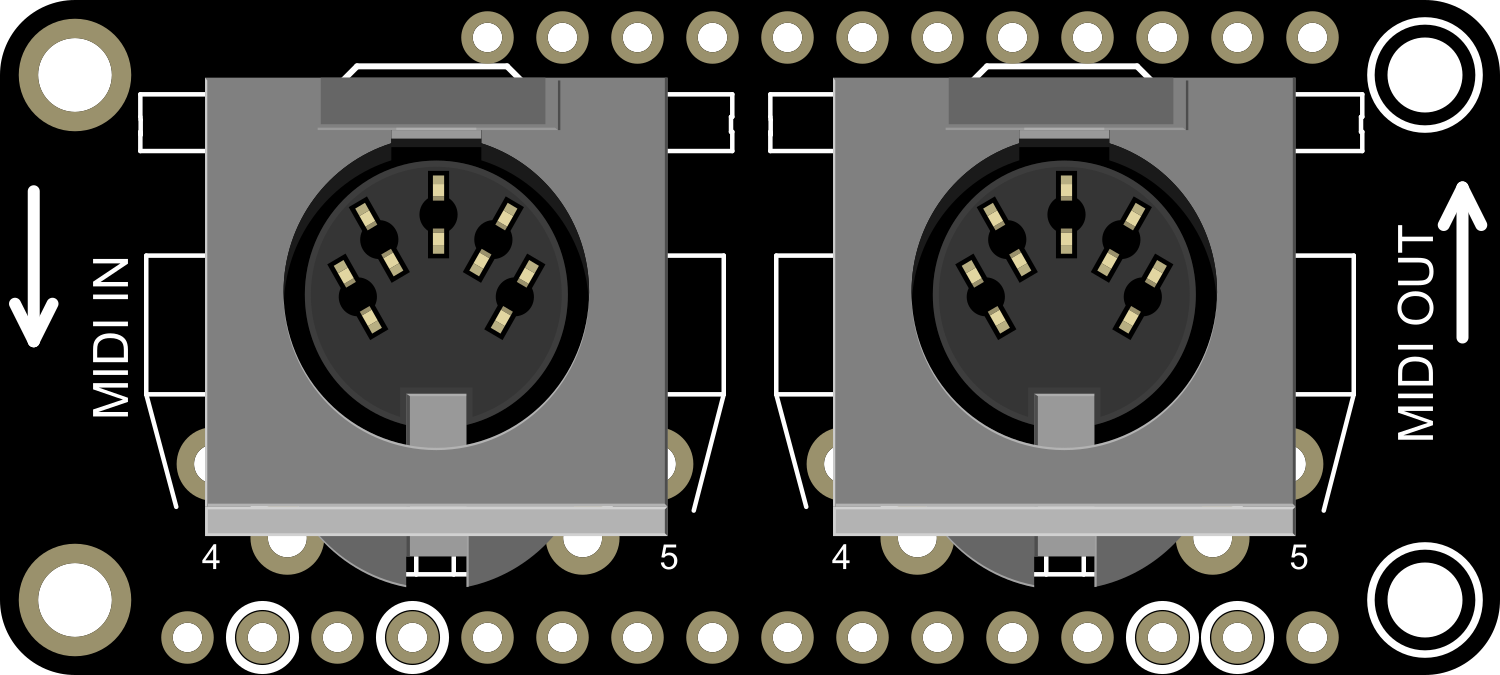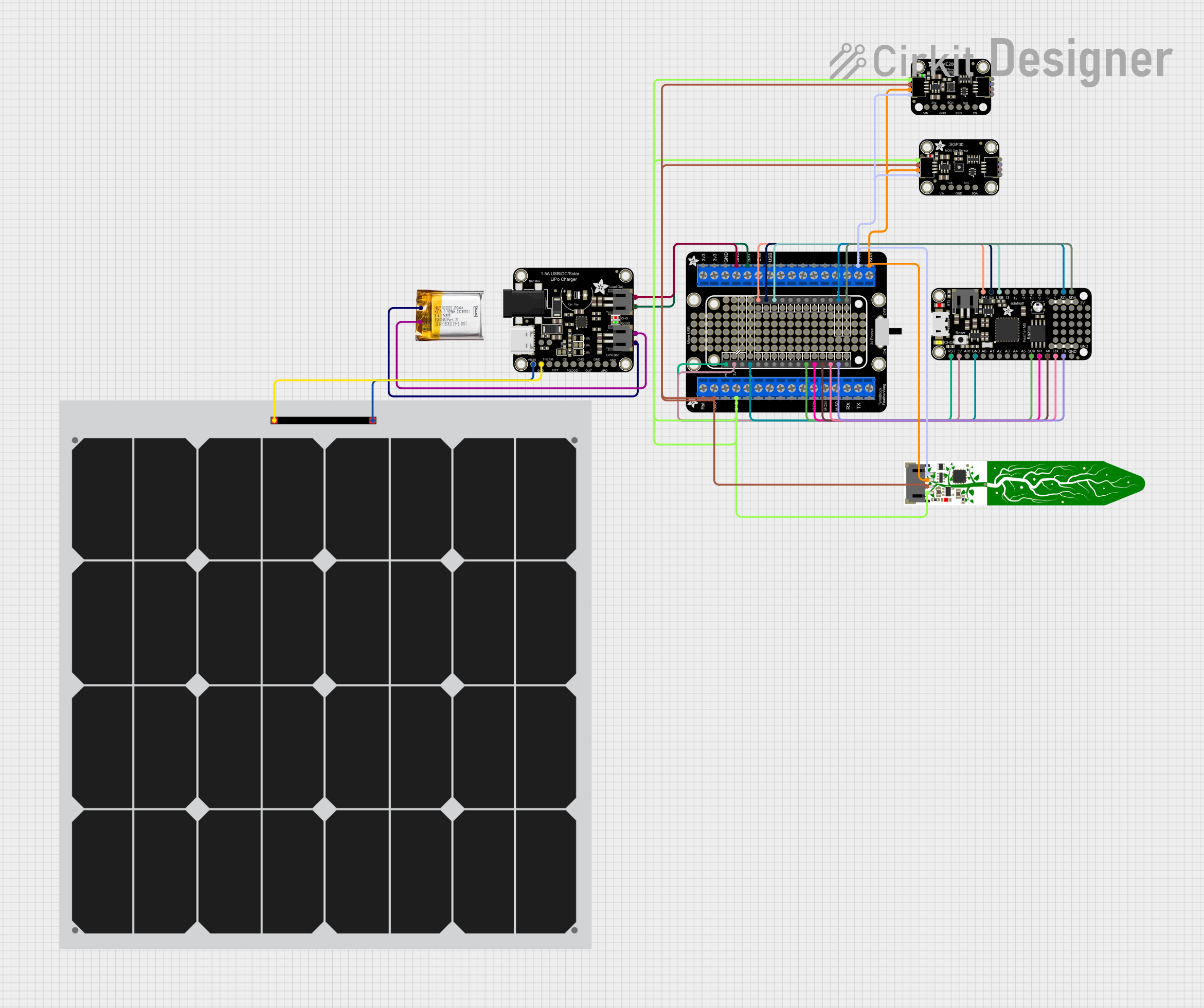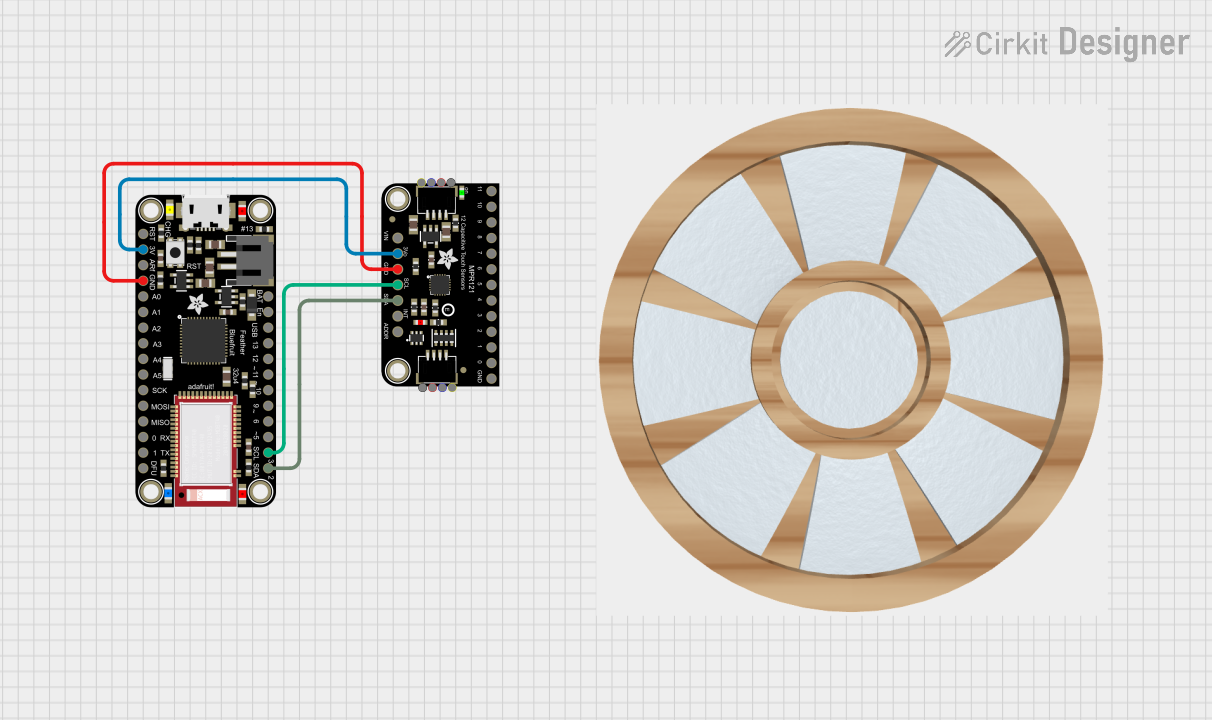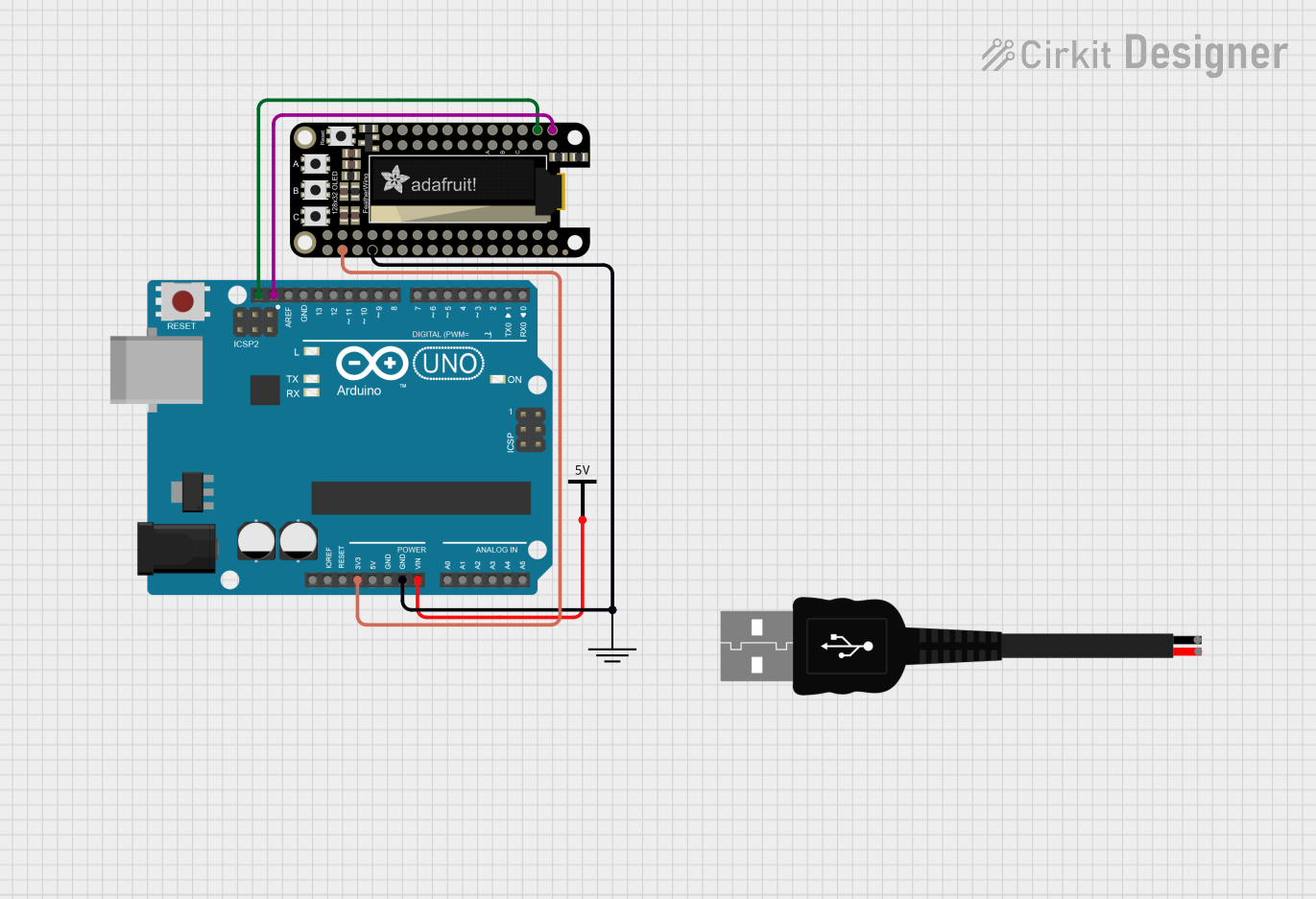
How to Use Adafruit MIDI FeatherWing Kit: Examples, Pinouts, and Specs

 Design with Adafruit MIDI FeatherWing Kit in Cirkit Designer
Design with Adafruit MIDI FeatherWing Kit in Cirkit DesignerIntroduction
The Adafruit MIDI FeatherWing Kit is an innovative add-on board designed to equip Feather-compatible development boards with MIDI (Musical Instrument Digital Interface) communication capabilities. This kit is ideal for musicians, hobbyists, and developers looking to integrate MIDI control into their projects. Common applications include synthesizers, sequencers, MIDI controllers, and musical installations.
Explore Projects Built with Adafruit MIDI FeatherWing Kit

 Open Project in Cirkit Designer
Open Project in Cirkit Designer
 Open Project in Cirkit Designer
Open Project in Cirkit Designer
 Open Project in Cirkit Designer
Open Project in Cirkit Designer
 Open Project in Cirkit Designer
Open Project in Cirkit DesignerExplore Projects Built with Adafruit MIDI FeatherWing Kit

 Open Project in Cirkit Designer
Open Project in Cirkit Designer
 Open Project in Cirkit Designer
Open Project in Cirkit Designer
 Open Project in Cirkit Designer
Open Project in Cirkit Designer
 Open Project in Cirkit Designer
Open Project in Cirkit DesignerTechnical Specifications
Key Technical Details
- Operating Voltage: 3.3V to 5V (matches the Feather board's logic level)
- MIDI Ports: Standard 5-pin DIN MIDI input and output
- Indicators: MIDI status and activity LEDs
Pin Configuration and Descriptions
| Pin | Description |
|---|---|
| RX | MIDI Input |
| TX | MIDI Output |
| GND | Ground |
| 3V | 3.3V Power |
| USB | USB Power |
Usage Instructions
Integration with a Feather Board
To use the Adafruit MIDI FeatherWing with your Feather board, follow these steps:
- Assembly: Solder the provided headers onto the MIDI FeatherWing and attach it to your Feather board.
- Wiring: Connect the MIDI input and output ports using standard MIDI cables to your MIDI devices.
- Power: Ensure that the Feather board is powered, which will also power the MIDI FeatherWing.
- Programming: Write or upload a MIDI handling code to the Feather board.
Best Practices
- Grounding: Ensure that all devices in your MIDI setup are properly grounded to avoid ground loops.
- Cable Quality: Use high-quality MIDI cables to ensure reliable communication.
- Power Supply: Use a stable power supply to prevent unexpected behavior or resets.
Example Code for Arduino UNO
Below is a simple example code snippet for sending MIDI messages using an Arduino UNO. This code can be adapted for use with Feather-compatible boards.
#include <MIDI.h>
MIDI_CREATE_DEFAULT_INSTANCE();
void setup() {
MIDI.begin(MIDI_CHANNEL_OMNI); // Listen to all incoming messages
}
void loop() {
// Send a Note On message on channel 1, note 60 (Middle C), velocity 127
MIDI.sendNoteOn(60, 127, 1);
delay(500); // Wait for 500ms
// Send a Note Off message on channel 1, note 60, velocity 127
MIDI.sendNoteOff(60, 127, 1);
delay(500); // Wait for 500ms
}
Ensure that the MIDI library is installed in your Arduino IDE before uploading this code. The comments in the code are wrapped to adhere to the 80 character line length limit.
Troubleshooting and FAQs
Common Issues
- No MIDI Signal: Check the connections and ensure that the MIDI cables are fully inserted into the ports.
- LEDs Not Lighting Up: Verify that the FeatherWing is properly seated on the Feather board and that the board is powered.
- Unresponsive Device: Ensure that the MIDI channel in your code matches the channel expected by the receiving device.
Solutions and Tips
- Recheck Wiring: Double-check all connections, including the solder joints on the headers.
- Reset the Board: Sometimes, simply resetting the Feather board can resolve communication issues.
- Update Firmware: Ensure that the Feather board is running the latest firmware.
FAQs
Q: Can I power the MIDI FeatherWing separately from the Feather board? A: No, the MIDI FeatherWing is designed to be powered directly from the Feather board.
Q: Is it possible to use the MIDI FeatherWing with other development boards? A: The MIDI FeatherWing is specifically designed for Feather-compatible boards. However, with appropriate level shifting, it may be possible to use it with other 3.3V or 5V microcontrollers.
Q: How do I know if the MIDI FeatherWing is receiving MIDI data? A: The MIDI status LED on the FeatherWing will light up when MIDI data is being received.
For further assistance, consult the Adafruit support forums or the detailed product guide available on the Adafruit website.